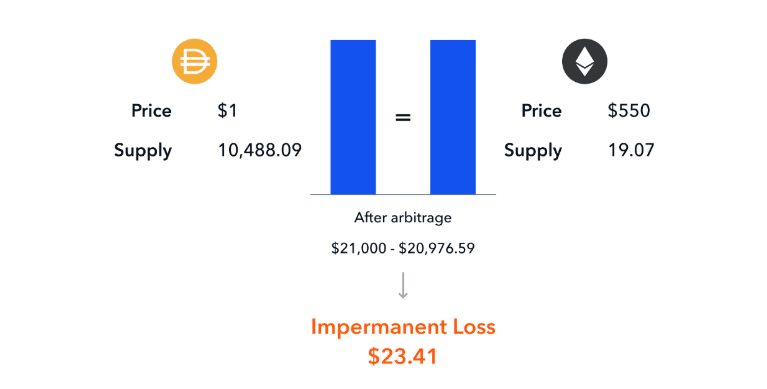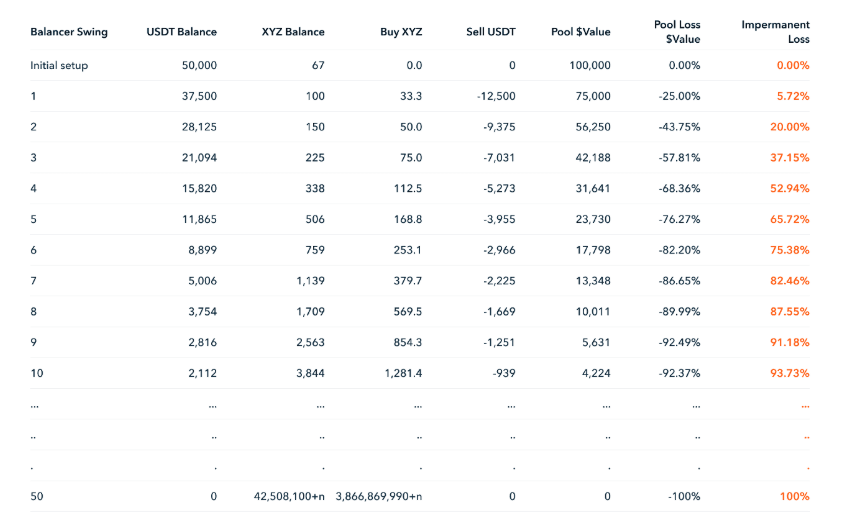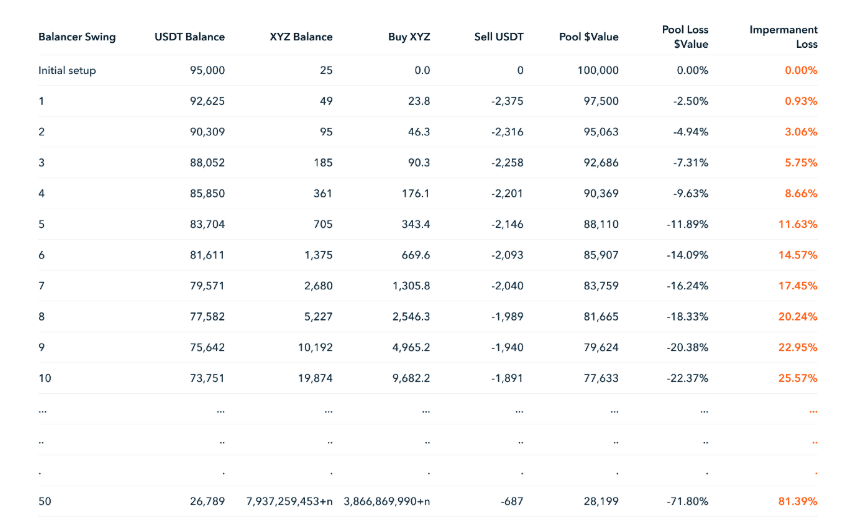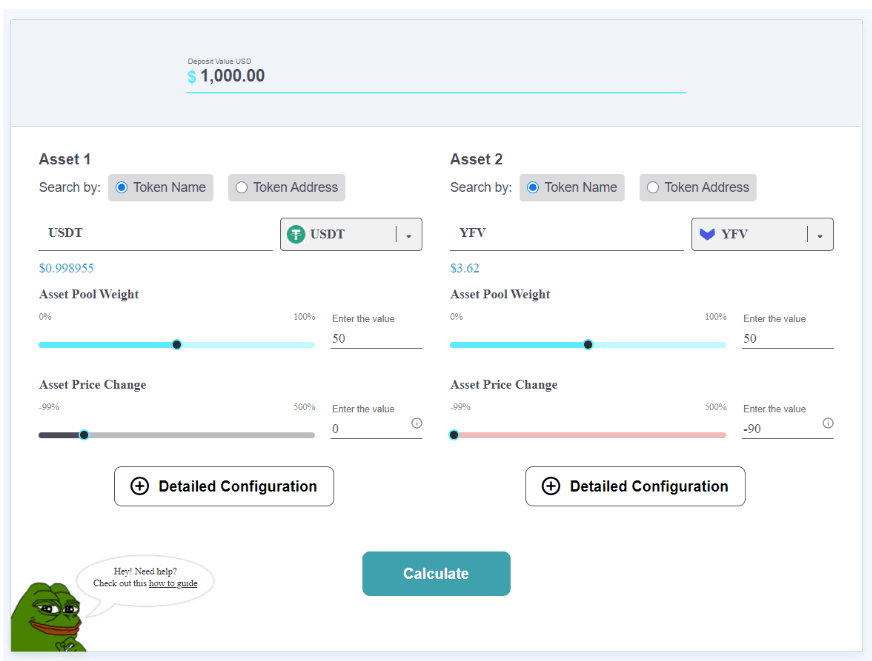Impermanent loss is a phenomenon that affects liquidity providers in the crypto world, generating uncertainty and concern among investors.
Deciphering Impermanent Loss: Key Concepts and Functionality
Impermanent loss occurs when fluctuations in the price of a token cause the value of the assets deposited in a liquidity pool to be lower than what would have been obtained if they were kept separately. How does it work?Imagine that you deposit two tokens in an automated market-making fund (AMM) in a decentralized exchange (DEX). If the price ratio between both tokens varies after the deposit, when you withdraw your funds you might obtain less value compared to simply keeping the tokens in your wallet.
Essential points of impermanent loss:
- Price Imbalance: The difference between the price of the tokens at the time of deposit and at withdrawal generates this mismatch.
- Temporary Nature: It is called “impermanent” because if the prices rebalance, the loss is reversed.
- Opportunity Cost: The loss is expressed based on the value you would have reached by keeping the assets outside the pool.

Calculation of Impermanent Loss: Formulas and Practical Examples
To quantify this loss, a formula is used that relates the variation in token prices. The basic formula is:
Impermanent Loss = 2 * √(price_ratio) / (1 + price_ratio) – 1
Where the price_ratio is the relationship between the token price at the time of deposit and at withdrawal.
Practical Example
Consider a liquidity pool composed of two tokens, A and B.
You deposit 1 A and 100 B, assuming an initial equivalence of 1 A = 100 B.
If the price of A rises and now 1 A is equivalent to 150 B, the balance in the pool will automatically adjust.
When you withdraw your funds, the amount of A and B you receive will be modified to maintain the pool’s proportion, which may result in a total value lower than if you had simply kept the tokens.
This difference is the impermanent loss, a theoretical cost that materializes at the moment of withdrawing liquidity.




Where and When Does Impermanent Loss Occur
Context in Decentralized Exchanges (DEX)
Impermanent loss mainly manifests in DEXs that depend on liquidity providers to form trading pairs.
- AMM and Liquidity Pools: Automated market-making algorithms adjust the balances in the pools to maintain a predefined equilibrium.
- Moment of Withdrawal: The loss “concretizes” if you withdraw your funds at a moment when the prices are imbalanced relative to the initial deposit.
When It Happens
This phenomenon occurs every time there is a substantial variation in the price ratio of the tokens from the moment of deposit until withdrawal. It is, in essence, an opportunity cost that materializes based on market behavior.
Suggested image: A timeline that marks the deposit, the fluctuation of prices, and the withdrawal of funds, highlighting the critical moment of impermanent loss.
Strategies to Mitigate and Avoid Impermanent Loss
Although it is difficult to completely eliminate impermanent loss, there are various tactics to reduce its impact:
1. Select Less Volatile Tokens
- Stablecoins: Using stablecoins reduces volatility and, consequently, the risk of significant losses.
- Correlated Tokens: Opt for assets whose prices move similarly. This helps to minimize the mismatch in the pool.
2. Constantly Monitor the Market
Regular monitoring of market conditions allows you to:
- Adjust your positions in time.
- Detect opportunities to withdraw or add liquidity at more favorable moments.
3. Diversify Your Portfolio
Allocating a small portion of your assets to different pools or pairs with different levels of exposure can help to:
- Limit overall risk.
- Mitigate the impact of volatility in a single pair.
4. Consider Protection Tools
Some projects offer insurance or Impermanent Loss Protection (IPP). This tool can:
Partially offset the loss if a major mismatch occurs.
Be an additional option to manage risk.
Technical and Mathematical Aspects of Impermanent Loss
How the Formula Works
The impermanent loss formula is based on the relationship between the initial price and the price at withdrawal:
- Price Ratio: It is fundamental to determine the magnitude of the loss.
- Relative Calculation: By evaluating this ratio, you can anticipate the impact of fluctuations and decide whether to withdraw or keep your funds in the pool.
Numerical Example
If you deposit 1 token A and 100 tokens B, and the price of token A goes up, the formula will allow you to estimate the loss as a percentage. Although the calculation may seem complex at first, several online tools help you simplify this process. Some recommended platforms include specific calculators on sites such as DeFi Pulse and Uniswap Info.

